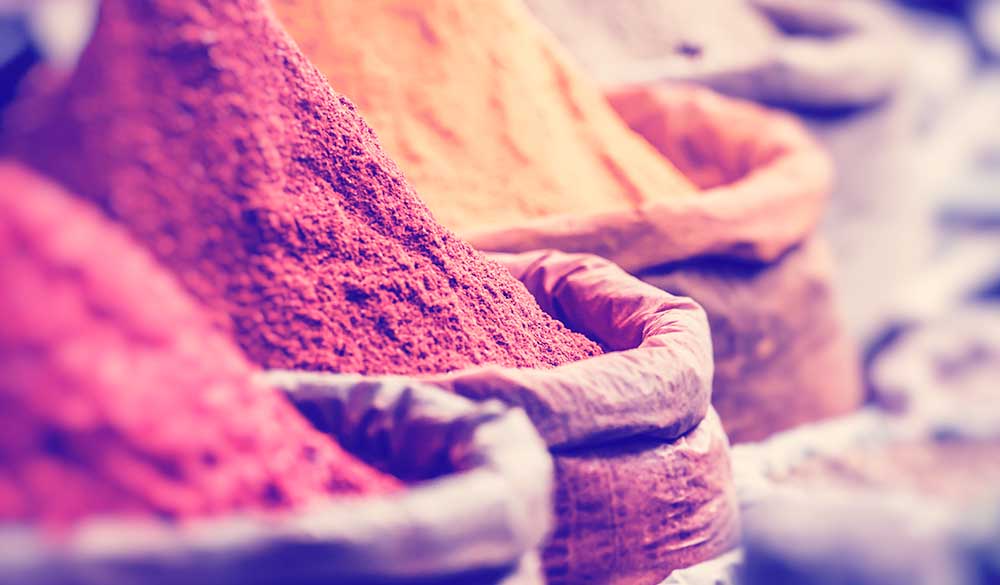Cinnamon is a spice that is made from the inner bark of Cinnamomum trees. Cinnamon primarily contains volatile oils and other derivatives, such as cinnamaldehyde, cinnamic acid and cinnamate, along with procyanidins and catechins, all of which contribute to the fragrance and cinnamon’s biological activities.[1]
The two most common varieties are Ceylon or true cinnamon (C. zeylanicum/verum) and Chinese cinnamon (C. cassia). They have similar properties and health benefits, but C. cassia seems to get a bad reputation for its coumarin levels, which is believed to be harmful is high doses.
This may be the case in unregulated foods but not in regulated supplements in Australia. The Therapeutic Goods Association (TGA) in Australia require that cinnamon in listed products contain less than 0.001% of coumarin. These levels can be confirmed with supplement suppliers.
This plant plays a vital role as a spice in cooking, but its constituents also mean it is antimicrobial, antifungal, antioxidant and antidiabetic. Cinnamon has been used as an anti-inflammatory, antiemetic, insecticidal, antimycotic and anticancer agent. Traditional Ayurvedic medicine has used cinnamon extracts for ailments such as diarrhoea, arthritis and menstrual irregularities. Other uses of cinnamon range from improving the health of the colon, increasing the blood circulation in the uterus, cholesterol lowering affects, assisting with diabetes, to dental problems and bad breath.[2]
Glycaemic control and diabetes
The World Health Organization (WHO) states that in 2014, 8.5% of adults aged 18 years and older had diabetes. In 2015, diabetes was the direct cause of 1.6 million deaths and in 2012 high blood glucose was the cause of another 2.2 million deaths. Blood glucose control is one of the top treatment strategies recommended by WHO. [3]
A Cochrane review on cinnamon states that long-term blood glucose control is essential in reducing the risk of complications associated with diabetes mellitus such as cardiovascular disease (CVD), retinopathy and nephropathy.[4]
Insulin is one of the key hormones that regulates energy and metabolism use as well as transporting sugar from the bloodstream into cells. Cinnamon has been studied as a therapy for improving glycaemic control through its insulin-mimicking biologically active properties that enhance glucose uptake and utilisation in the cell by:[2,5]
- modulating hepatic glucose metabolism through changes in pyruvate kinase (PK) and phosphenol pyruvate carboxikinase (PEPCK)
- inhibition of intestinal glycosidase
- translocation and synthesis of glucose transporter 4 (GLUT-4)
- insulin receptor de-phosphorylation and auto-phosphorylation.
In type 2 diabetes, higher amounts of glycated haemoglobin (HbA1c) are indicative of poorer control of blood glucose levels.[6] Once haemoglobin has been glycated, its ability to transport oxygen, as well as collect carbon dioxide to return to the lungs, is lost leading to advanced glycated end product (AGE), elevated HbA1c and plasma glucose which are associated with retinopathy, nephropathy and cardiovascular disease.[7]
In a clinical trial, 2g of cinnamon a day for 12 weeks alongside regular medication for type 2 diabetes, significantly reduced glycated HbA1c, as well as diastolic and systolic blood pressure compared to placebo.[8]
Metabolic syndrome
Insulin resistance is a hallmark of serious conditions such as metabolic syndrome. Elevated glucose and lipids, insulin resistance, decreased antioxidant activity and increased weight gain are strongly associated with metabolic syndrome. Therefore, managing these factors is an important component in preventing metabolic syndrome as well as cardiovascular disease.[9]
A recent double-blind trial reported that 3g of cinnamon significantly improved all components of metabolic syndrome such as insulin, blood pressure, antioxidant status and lean body mass when compared to a placebo.[10]
Colitis
Cinnamon extract has been studied for its anti-inflammatory effects in vivo and in vitro by targeting antigen-presenting cell function (APC, MHCII (+)) and CD11c(+) dendritic cells.
A 2011 study found that oral cinnamon extract could inhibit the development and progression of intestinal colitis by inhibiting COX-2 and pro-inflammatory cytokines while enhancing interleukin (IL)-10. Researchers analysed cytokine expression profiles in inflamed tissue associated with colitis and found that cinnamon extract inhibited maturation of MCHII (+), APCs or CD11c(+) by suppressing expression of co-stimulatory molecules and cyclooxygenases (COX)-2.[11]
Menstrual cyclicity
Interest has begun to flourish on the beneficial effects cinnamon has on menstrual regularity. In the first double-blind trial to investigate metabolic dysfunction and menstrual cyclicity in women with polycystic ovarian syndrome (PCOS), 1.5g of cinnamon improved menstrual cyclicity, proving to be a useful adjunct for the management of menstrual dysfunction in women with PCOS, likely by reducing fasting glucose and insulin resistant parameters.[12]
Dysmenorrhoea
Primary dysmenorrhea is one of the most common gynaecological disorders. The cramping in dysmenorrhea is generally associated with the release of prostaglandins from the uterine lining. In a clinical study on the analgesic potential of cinnamon 420mg reduced the severity and duration of menstrual pain in women with dysmenorrhea when compared to placebo.[13]
Overall, cinnamon has been used as a spice in daily life for centuries without any side effects. The research suggest that the health benefits of cinnamon are numerous and cinnamon can be used as a safe, multifunctional supplement with antidiabetic, anti-inflammatory and antioxidant activity.
References
- Rao P, Gan S. Cinnamon: a multifaceted medicinal plant. Evidence-Based Complement Alternative Med 2014;(2014):article ID 642942. https://www.hindawi.com/journals/ecam/2014/642942/
- Medagama A. The glycaemic outcomes of cinnamon, a review of the experimental evidence and clinical trials. Nutr J 2015;14(1). https://nutritionj.biomedcentral.com/articles/10.1186/s12937-015-0098-9
- Diabetes. World Health Organization 2017. http://www.who.int/mediacentre/factsheets/fs312/en/
- Leach M, Kumar S. Cinnamon for diabetes mellitus. Cochrane 2012. http://www.cochrane.org/CD007170/ENDOC_cinnamon-for-diabetes-mellitus
- Jarvill-Taylor K, Anderson R, Graves D. A hydroxychalcone derived from cinnamon functions as a mimetic for insulin in 3T3-L1 adipocytes. J American College Nutr 2001;20(4):327-336.
- Rahbar S. The discovery of glycated hemoglobin: a major event in the study of nonenzymatic chemistry in biological systems. Ann NY Acad Sci 2005;1043:9-19.
www.who.int/mediacentre/factsheets - Khaw KT, Wareham N. Glycated hemoglobin as a marker of cardiovascular risk. Curr Opin Lipidol 2006;17(6):637-643.
- Akilen R, Tsiami A, Devendra D, et al. Glycated haemoglobin and blood pressure-lowering effect of cinnamon in multi-ethnic type 2 diabetic patients in the UK: a randomized, placebo-controlled, double-blind clinical trial. Diabet Med 2010;27(10):1159-1167.
- Qin B, Panickar KS, Anderson RA. Cinnamon: potential role in the prevention of insulin resistance, metabolic syndrome, and type 2 diabetes. J Diabetes Sci Technol 2010;4(3):685-693.
https://www.ncbi.nlm.nih.gov/pmc/articles/PMC2901047/ - Gupta Jain S, Puri S, Misra A, et al. Effect of oral cinnamon intervention on metabolic profile and body composition of Asian Indians with metabolic syndrome: a randomized double-blind control trial. Lipids Health Dis 2017;16(1):113.
https://www.ncbi.nlm.nih.gov/pmc/articles/PMC5469078/ - Kwon H. Cinnamon extract suppresses experimental colitis through modulation of antigen-presenting cells. World J Gastroenterol 2011;17(8):976.
- Kort D, Lobo R. Preliminary evidence that cinnamon improves menstrual cyclicity in women with polycystic ovary syndrome. Obstetrical Gynecological Survey 2015;70(2):94-95.
- Jaafarpour M. Comparative effect of cinnamon and ibuprofen for treatment of primary dysmenorrhea: a randomized double-blind clinical trial. J Clinical Diagnostic Res 2015;9(4):QC04-7.
https://www.ncbi.nlm.nih.gov/pmc/articles/PMC4437117/
DISCLAIMER:
The information provided on FX Medicine is for educational and informational purposes only. The information provided on this site is not, nor is it intended to be, a substitute for professional advice or care. Please seek the advice of a qualified health care professional in the event something you have read here raises questions or concerns regarding your health.



